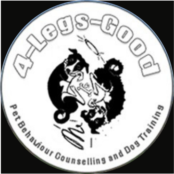Dog body language – and why we need to understand it!
In no way is this video exhaustive more just a series of snap shots. Hopefully it will help you to think about what dogs are ‘saying;’ and to start to tune your observation skills.
- Body language is a dog’s main method of communication
- Dogs are social and need to communicate
Each dog will have their own behavioural repertoire, influenced by:
- Breed – changes in dogs shape over times has hindered some breeds ability to communicate
- Innate tendencies
- Socialisation
- Experience
- What has worked in the past
- Learning
- Stress
Why do we need to understand dog body language?
- We live with dogs they are in our houses they are in our beds!
- Everyone who comes into contact with dogs should have a basic understanding of what dogs are ‘saying’ primarily for safety
- Understanding body language is key to understanding an individual’s motivation for what they doing at the time.
It makes sense to try to understand what dogs are communicating. It must feel good for a dog to feel understood and after all, dogs take the time and trouble to understand us – it is in their interests.
Having a feel for body language signalling helps us live together more co-operatively and harmoniously improving welfare of both humans and dogs.
- Each signal will have many different meanings the key to interpreting the meaning is context. The meaning of a body language signal will become apparent in the context of the situation at that moment
- In addition to context one needs to look at the overall demeanour of the animal
- Body language is very fluid
- Don’t get stuck on a particular body part but observe the whole animal. It can help to concentrate on a single signal for a while in order to learn; look at what happens immediately before and immediately afterwards
- Sociability or ‘green flag’ signals as Sarah Whitehead puts it:
- side ways posture,
- relaxed body and
- likely the mouth will be slightly open
- and the tail gently wagging.
- The dogs is likely to be friendly
- Be wary of ears and tail as these can vary so much from dog to dog – they all have their individual styles and depends upon the conformation of the dog
- Consider the 3f’s –fight, flee or if a dog is uncertain it is likely to or faff about.
- Yawn – means need more oxygen can be a stress response.
- Shake off – can serve to reduce adrenaline. Often occurs at a transition between one activity or place and the next. Could be described as moving from a doing to a thinking state of mind
- Scratching can be a social signal, a displacement activity (faff) or the dog may simply have an itch!
- Look away signals non-threat. A friendly, negotiating signal
- Lip-licking can have a myriad of different meanings again can mean negotiation or again displacement
- Tongue-flick is a sign that the dog needs more information from the environment, can be a negotiating tool and may indicate surprise
- Paw-lift can mean anticipation or uncertainty
- An open mouth is usually good an shows that the dog is relaxed. Tension in the mouth can be a sign of pending aggression
- If you think that you see a dog freeze then you probably did. Dogs can be so quick. Freezing comes just before a bite or snap
- Clients often say ‘he was wagging his tail’. However, a stiff, high tail wagging fast is more indicative of arousal than friendliness and it could go either way
- When a dog shows the whites of their eye it is known as whale eye and often means that the dog is frightened
Have a look at the video and then watch dogs your own, in the park, in the vets at training class…
For those dogs who are good at home but sometimes have problems out and about. As we walk and talk I will ask questions, explain, observe demonstate
https://www.thefamilydog.com/stop-the-77/
https://www.thefamilydog.com/kids
